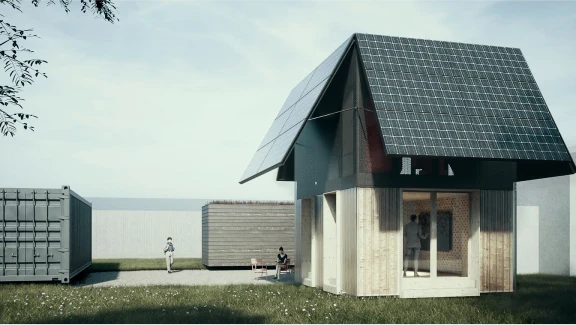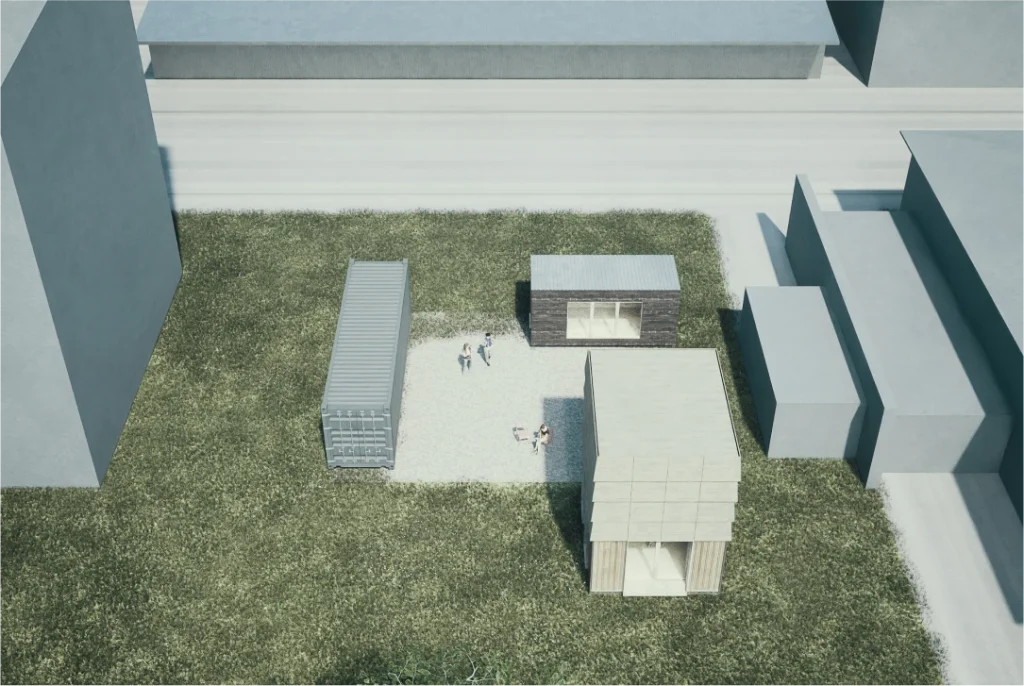
Implementation
On the Göppingen campus of Esslingen University of Applied Sciences, the team from andOffice Architekten and WoodenValley is planning a showcase building in terms of sustainability, energy management and digitalisation.

Requirements

The timber construction then has 2 full storeys. The insulated ground floor houses a vestibule and a seminar room. The building services will be located on the unheated upper floor. The minimum energy requirements of the KFW55 standard are to be met in order to achieve measured values comparable to those of the new building. The windows are to reflect a lower standard.
Adaptive planning
The use of recycled building materials is proposed for the façade of the research pavilion.
The appearance of the pavilion will depend on the availability of building materials and elements on material exchanges at the time of construction.
Only the timber-frame support structure is planned in advance. The axial dimensions are flexible and adapt to the dimensions of the available façade elements.

Joining procedure
- Heating / Cooling
- Electricity / sockets
- Lighting
- Data cables / WLAN
- Sensors for indoor air measurements

Production process
It is proposed to construct the research pavilion from two room modules in separate manufacturing processes. The load-bearing system will be a single-variety deconstructable
Wooden post frame. This can be manufactured on site or supplied prefabricated. The centre-to-centre dimension of the frame is flexibly adapted to the dimensions of recycled door and window elements. The infill is made from natural materials such as straw bales or hemp limestone.
Installing the insulation makes students aware of its properties.
